An apparent mockup of China’s stealthy GJ-11 Sharp Sword unmanned combat aerial vehicle (UCAV) has appeared aboard the country’s full-size aircraft carrier test facility. This may well be the strongest suggestion so far that the GJ-11, or a development of it, is intended to form part of China’s future carrier air wing. If fully realized, it would provide a capability not currently known to be pursued by the U.S. Navy.
A satellite photo of the land-based aircraft carrier mockup in Wuhan has begun to circulate on social media. It clearly shows a stealthy flying wing drone, identified as the GJ-11, or a variant of it, immediately ahead of the fake carrier’s ‘island’ superstructure. The mockup of the drone is arranged near other aircraft test ‘shapes,’ including of the J-15 carrier fighter and, on the bow, the stealthy J-35. It isn’t clear when the image was taken and nothing directly points to it being inauthentic, although that is always a possibility.
The Chinese aircraft carrier mockup is used to evaluate aircraft for potential use at sea, including how they will fit and be moved around on the carrier’s deck. Work with radio emissions and other testing is also done at the unique facility. Notably, in the past we saw a model of the J-35 carrier fighter on the mockup, which was additional evidence that this aircraft was also intended for a future shipborne application. The KJ-600 airborne early warning and control aircraft is another example. It seems that the arrival of an aircraft on the dummy carrier in model form is a precursor to it moving forward into flight testing before eventually heading aboard a real carrier in due course.

While the carrier mockup has undergone some changes and updates, it’s now understood to loosely represent the forthcoming Type 003 carrier. Named Fujian, and launched in June 2022, it will be the third aircraft carrier for the People’s Liberation Army Navy, or PLAN, and the first one to have a distinctly domestic design. It will also feature catapults for launching aircraft, which enables aircraft like the J-35 and the GJ-11 to be able to operate from it at relevant gross weights and the KJ-600 to fly from it at all. Catapult testing aboard the carrier began just three weeks ago.
Connections have been made between the GJ-11 and seagoing operations for some time now, something that The War Zone was exploring back in 2019, after reports in the Chinese media that the drone would serve aboard PLAN carriers in what was described as an unarmed reconnaissance role.
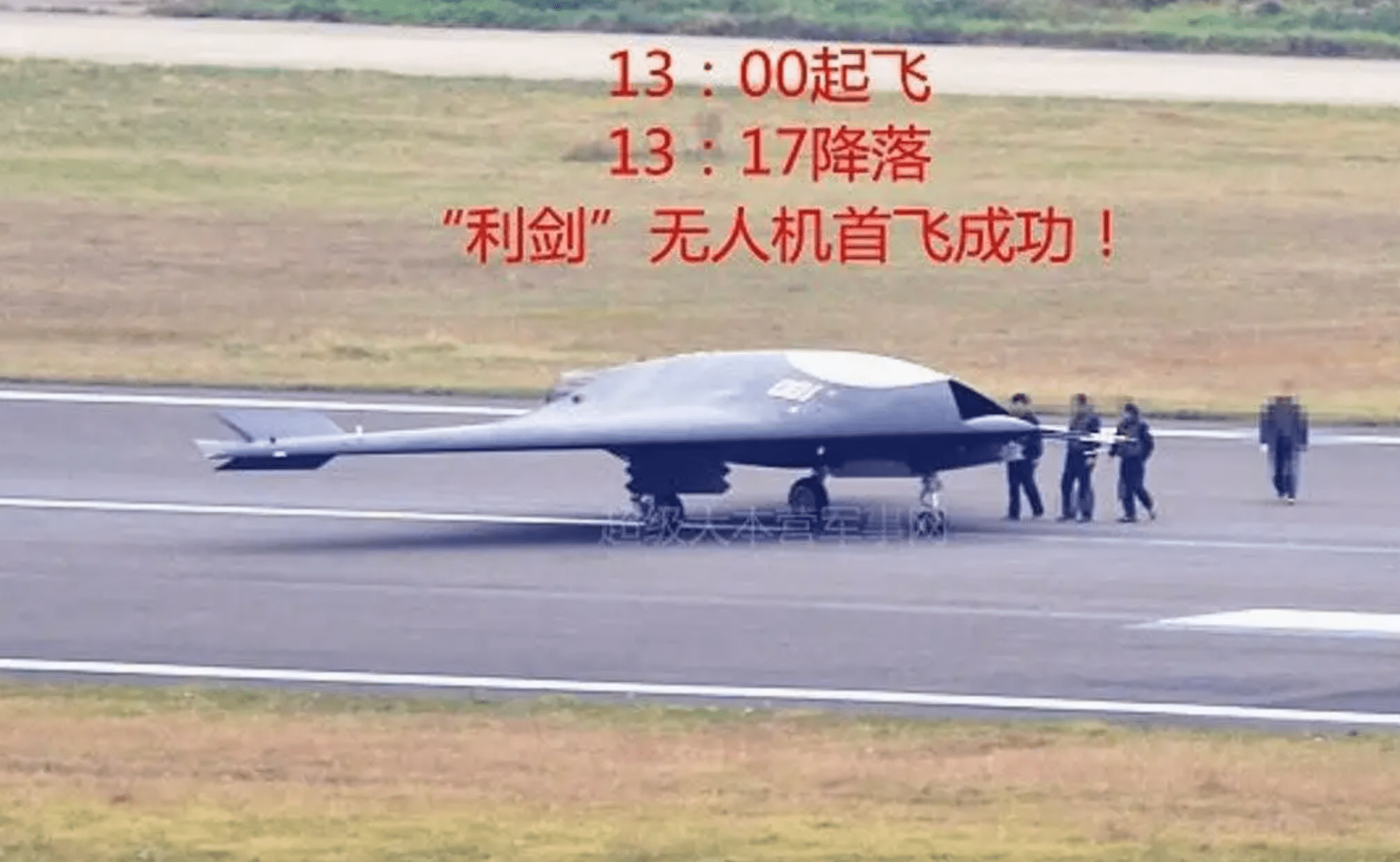
The PLAN has also begun to test much smaller drones aboard aircraft carriers without the need for catapults and arrestor gear. Multiple examples of at least two different types of commercial or commercial-derivative drones with vertical takeoff and landing capability have already been operated from the deck of the Chinese aircraft carrier Shandong, as you can read about here.
However, taking full advantage of a navalized GJ-11, or a similar design, requires a catapult-equipped big-deck carrier like the future Type 003. There has been some talk of China looking to operate stealthy flying wing drones from the Type 075 amphibious assault ships, including an animated video showing this concept, which makes some sense based on our original analysis.
It’s possible that these ships will host a smaller flying wing than the GJ-11, like the Tian Ying, for instance, although these ships will need to be retrofitted with a catapult and arresting gear to see that happen. Operating fixed-wing high-performance drones from amphibious assault ships and helicopter carriers is becoming an increasingly popular theme as of late.
As we have explored in the past, a naval version of the GJ-11 could bring powerful new capabilities to China’s future carrier air wings, not only in an unarmed intelligence, surveillance, and reconnaissance (ISR) capacity but also as a strike and electronic warfare asset.
ISR-configured GJ-11 would expand the sensor reach and increase the awareness, and thus lethality, of the carrier strike group. Its stealth characteristics would also allow it to get much closer to hostile forces. Meanwhile, a number of them could work together to relay information (including targeting data) via directional line-of-sight datalink back to their strike group. This kind of ‘daisy-chaining’ would be hard to detect and disrupt, and could be used to maintain beyond-line-of-sight connectivity instead of potentially more vulnerable satellite datalinks that may be severely degraded or totally unavailable during a major conflict.
Having a stealthy carrier drone that’s able to acquire high-priority targets — in particular, U.S. Navy carrier strike groups and other allied vessels — and then offer near-real-time targeting data would be a major boost to China’s already significant anti-access and area-denial capabilities. In such a scenario, a carrier-based GJ-11 might feed targeting data to both anti-ship ballistic missiles and long-range anti-ship cruise missiles, as well as crewed strike aircraft.
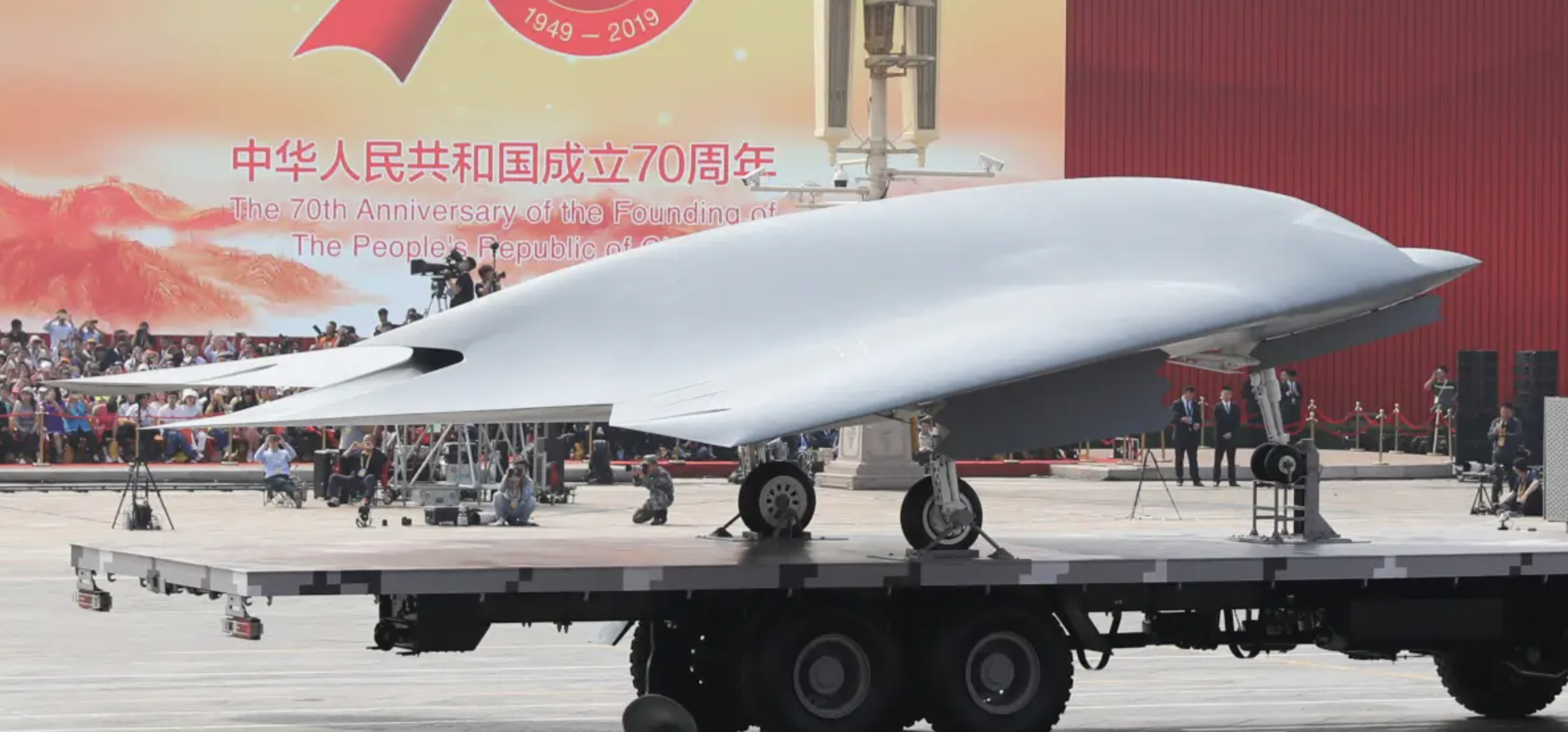
While a carrier-based ISR version of the GJ-11 would be a very useful addition to the PLAN air wing, an armed variant would also be a hugely significant asset. The arrival of a catapult-equipped carrier means that it will be possible to launch more heavily loaded aircraft, not just potentially the GJ-11 and fully laden fighter aircraft, but also a turboprop-powered fixed-wing airborne early warning and control (AEW&C) aircraft, the KJ-600, which you can read more about here.
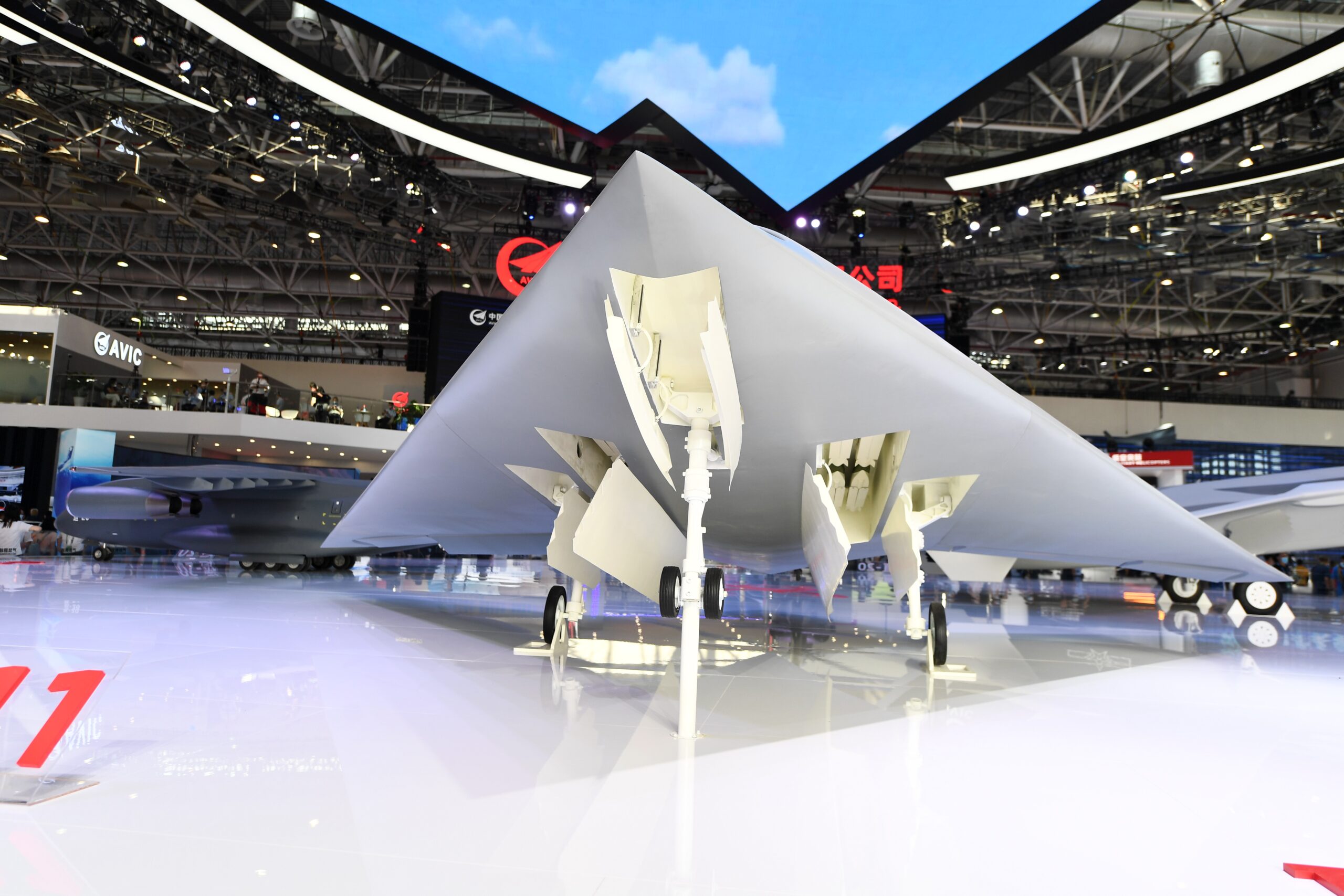
With internal weapons carriage, the GJ-11 is a highly suitable candidate for development as a stealthy carrier-based strike UCAV as well as a reconnaissance asset. In addition to being able to hunt for targets, such a drone would be able to prosecute them, too. It would provide a capability absent from any other nation on Earth — at least since the U.S. Navy abandoned its own stealthy strike and surveillance UCAV program in the 2010s. The shelving of plans for such a capability is especially notable when the U.S. Navy now says it plans to field a future carrier air wing with a 60 percent drone composition in the coming decade. It also speaks further to a glaring ‘missing link’ in the U.S. military drone portfolio — UCAVs — that persists to this day. China has been extremely bullish, even in the unclassified realm, at pursuing flying-wing UCAVs, with multiple types in development.
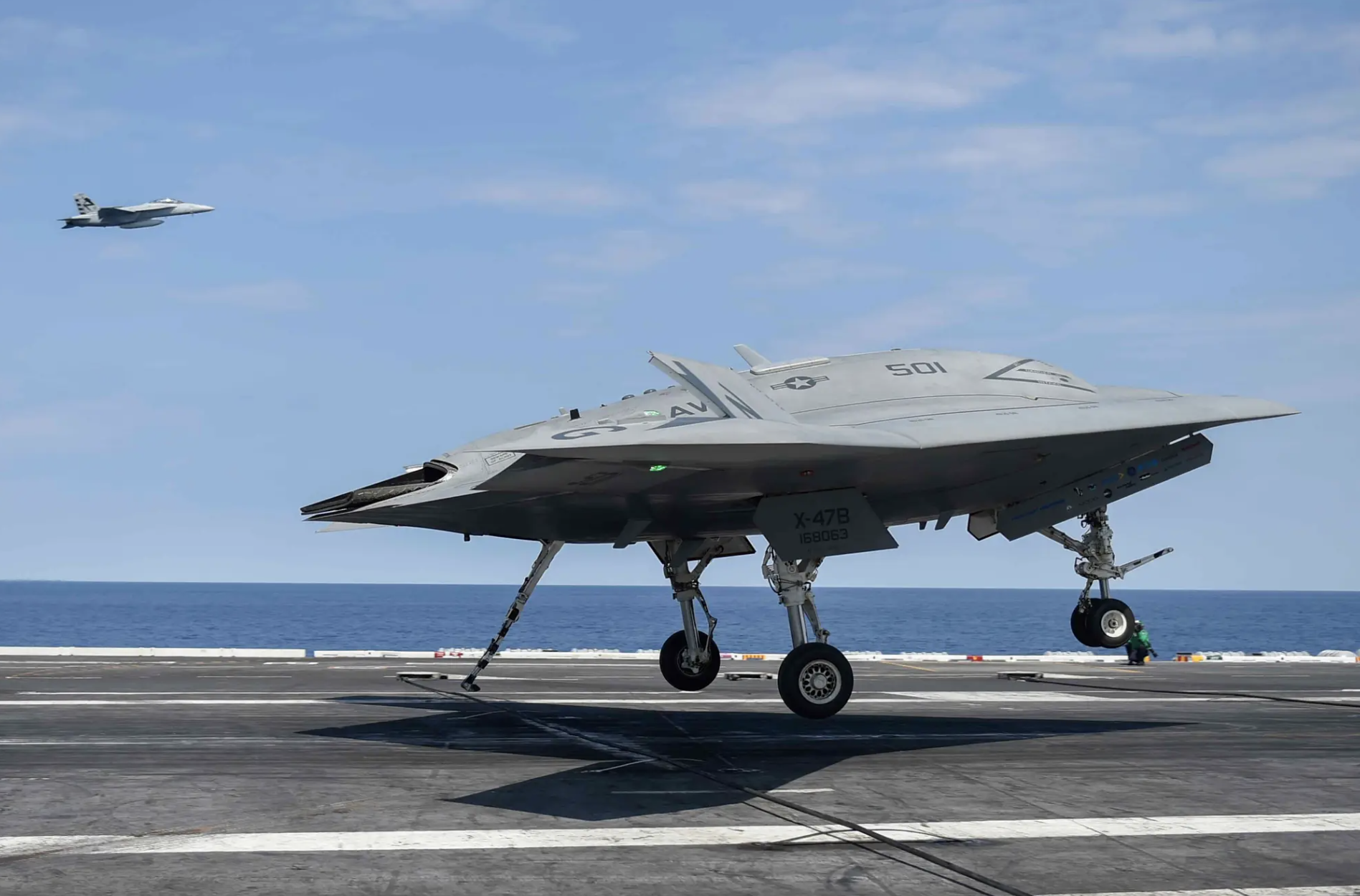
ISR and strike are just two of the most important missions that a stealthy carrier-based drone could conduct for the PLAN. There are also a range of electronic warfare missions that could also be just as relevant, or perhaps such a drone could even be outfitted as a tanker, even as a secondary capability set.
Just as important, however, for the PLAN, would be how a UCAV of this kind would enable a whole new concept of semi-autonomous, carrier-based drone operations to be developed and refined. We have already seen that China is keen on exploring the potential of crewed and uncrewed platforms working closely together, mirroring the U.S. military’s own ‘loyal wingman’ programs. There’s no reason why China wouldn’t seek to develop similar technologies and tactics for its carrier air wing, with the potential for joint operations between the stealthy J-35 and a low-observable drone perhaps being of particular interest.
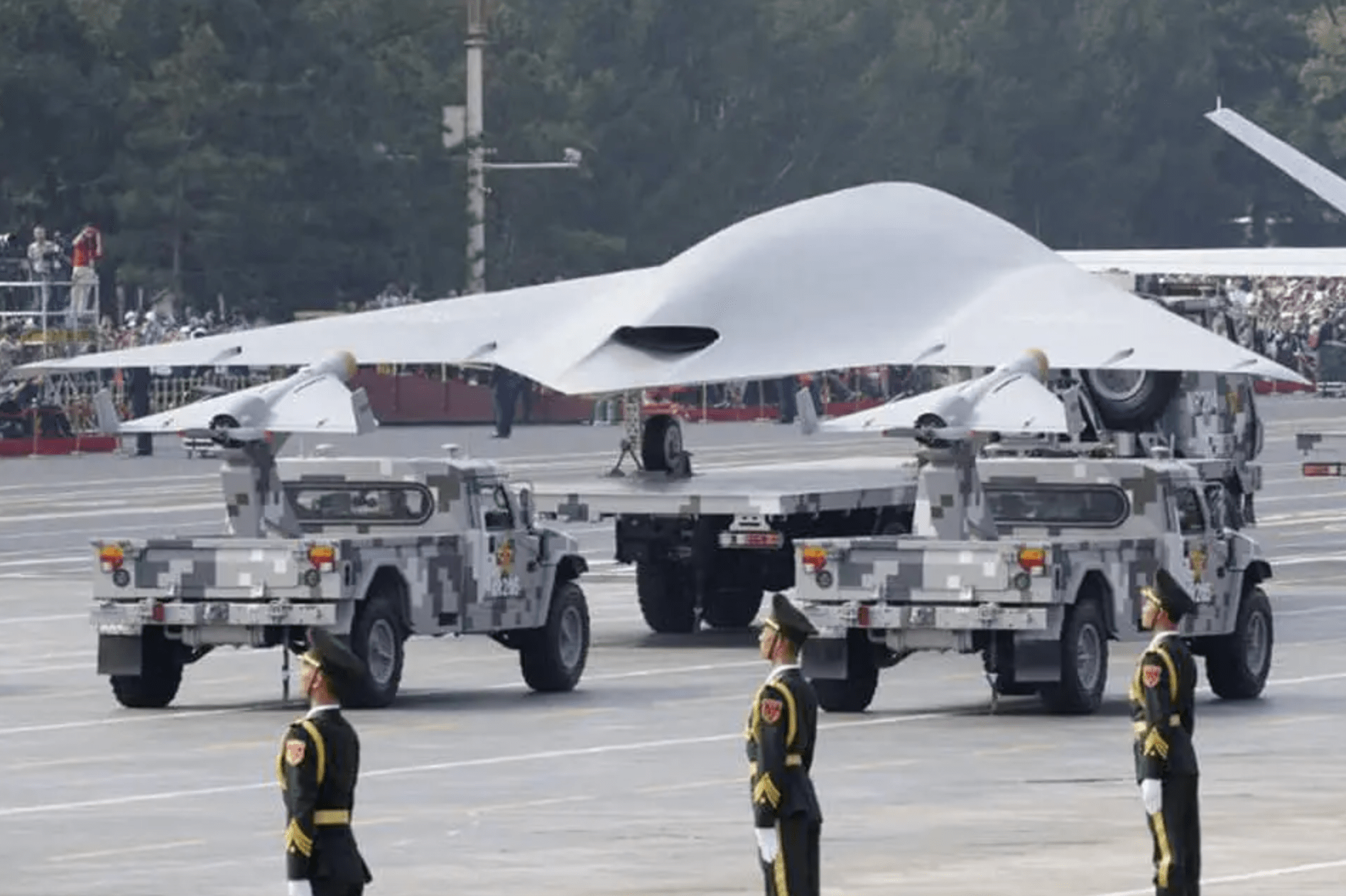
While all this sounds intriguing, before the PLAN fields such a capability, a lot of work will have to be done. Aside from completing the carrier and developing skills in an entirely new realm of catapult-assisted takeoff but arrested recovery (CATOBAR) operations, actually operating a flying-wing drone from it is a whole other story.
Communications and command and control architecture, as well as solutions for deck handling, will all have to be developed, tested, and deployed. The U.S. went through a high-profile program to do just this with the X-47Bs. China would have to learn similar lessons or obtain the know-how through other means.

Realizing a navalized variant of the GJ-11 is also a major task. Its basic dimensions, weight, and powerplant would need to be made suitable for the demanding carrier operations environment. Its structure and landing gear would have to be enhanced to deal with the harsh realities of launch and recovery aboard a ship. Still, all this seems to be theoretically within China’s reach as they are going through a similar process with the J-35 now.
China has shown in the past that it’s very much at the cutting edge of certain drone-related technologies. Integrating a stealthy jet-powered drone into a carrier air wing that will embark on a new design of carrier, with an entirely new set of takeoff and recovery requirements, will be an enormous challenge. But if China succeeds, it will very likely be worth all the efforts in terms of the revolutionary capabilities it could bring, all while paving the way for more advanced capabilities in the future.
Contact the author: thomas@thedrive.com
